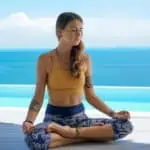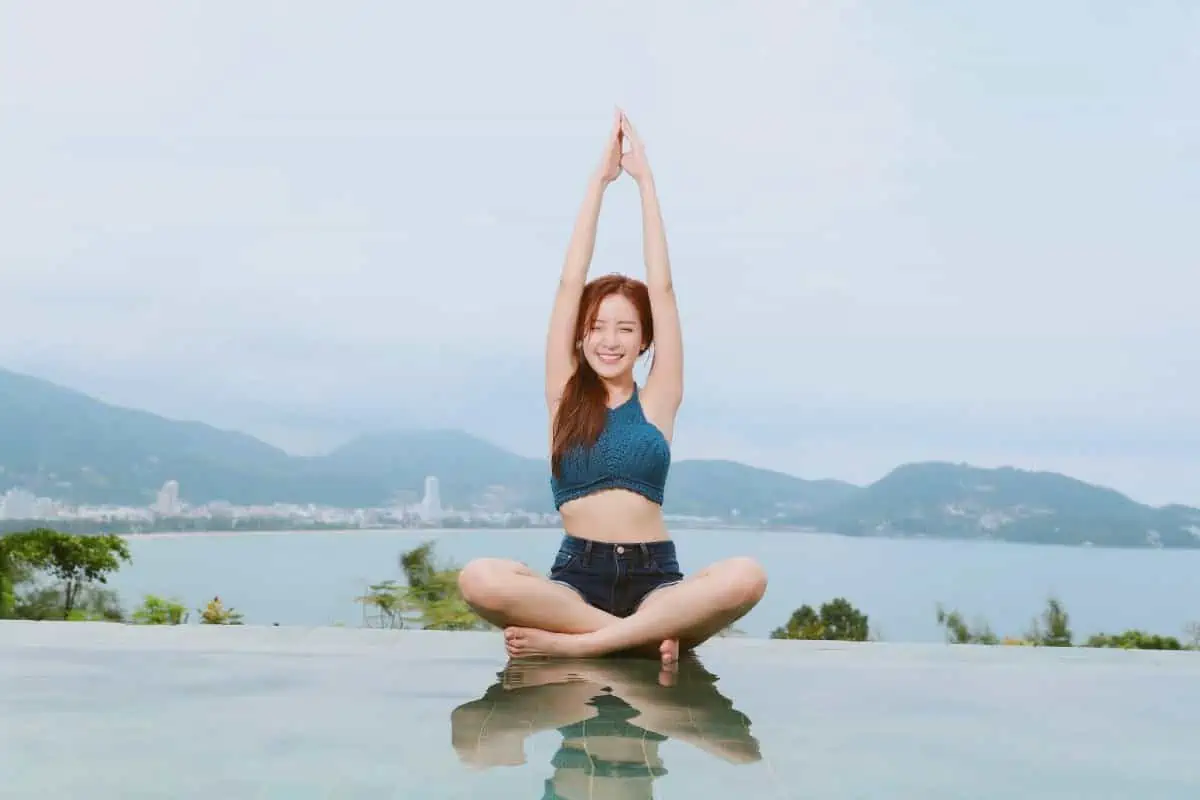Yoga has emerged from India and taken over the world, so much so that almost every city or small town will have at least one yoga studio and teacher, ready to teach any willing new students!
If you are the one that is ready to step foot into a yoga class, but you don’t want to feel like the ‘new one’ – this guide will give you the basics so that you can do yoga with confidence. We will outline what you need to know before practicing yoga, and the benefits that some of the most common poses will bring you.
So get comfy in Sukhasana (easy-pose) and read on.
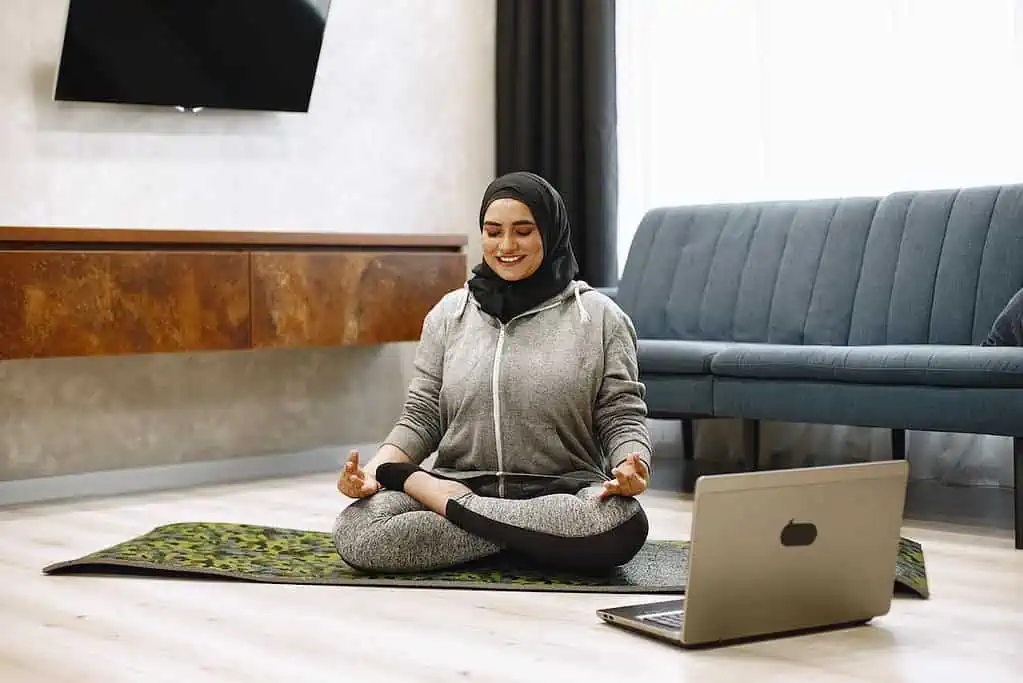
Contents
What are the yoga basics that I need to know?
Every yoga class will look a little different because every teacher tends to put their own unique spin on the practice. But, the foundations of a yoga practice originate from guidelines that were created in Ancient India. There was not one original teacher, but a number of transformative teachers that emerged from the East and brought yoga poses to the west.
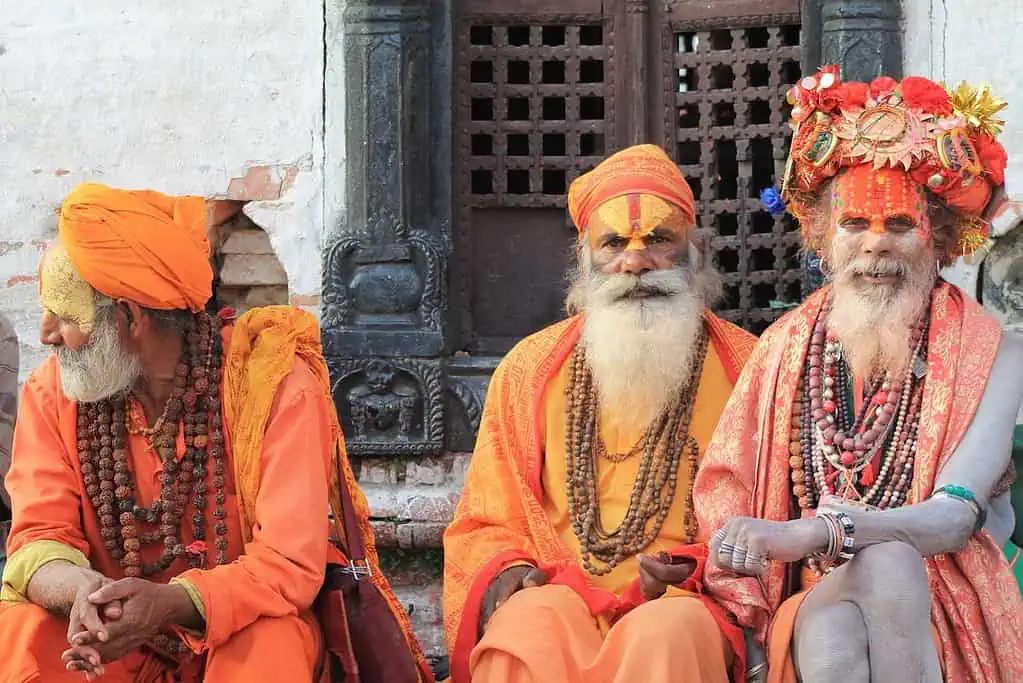
Sanskrit words
Asana is the Sanskrit (Ancient Indian language) word for posture. You may hear this word often during yoga classes, as all of the yoga poses end with the word asana. For example, Tadasana (Mountain pose), Balasana (Child’s pose), Adho Mukha Svanasana (Downward facing dog), and Vrksasana (Tree pose).
Sanskrit is a new language to get used to, but after attending a few classes, you might even start to learn the names of the yoga poses in Sanskrit too! Learning the names of the poses will help you to practice yoga, as it will give you the opportunity to drop into your body and move more meditatively. This meditative movement from practicing regularly eventually comes off the mat and into your everyday life.
Pranayama is another Sanskrit word that means breathwork. This is often done at the beginning or end of a yoga class to open the lungs and allow the flow of oxygen and energy to move freely through the body.
Both Asana and Pranayama are two aspects of a deeper practice. This practice is called the eight limbs of yoga and it describes how one can apply yoga to all parts of their life.
The Eight limbs of yoga
Yoga is more than just physical postures, it is a system of tools and techniques that are used to help one reach an enlightened state. An early sage in Ancient India called Patanjali wrote down the eight limbs of yoga as a guideline to encourage yoga students to incorporate the holistic side of yoga into their practice too.
These eight limbs are:
- Yamas – ethics and morals
- Niyamas – right ways of living
- Asana – a pose, or set of postures
- Pranayama – breathwork
- Pratyahara – withdrawal of the senses
- Dharana – concentration
- Dhyana – meditation
- Samadhi – Union, or enlightenment
These eight aspects of yoga, are meant to be applied to your daily practice, but also to your daily life, for a way to live deeper and with purpose through every part of your journey.
Choosing your style of Yoga Classes
Now that we’ve covered the basics, it’s time to understand what style of yoga class would be best suited for you! There are a few major styles of yoga, each with very different energy and technique. When choosing a style of yoga classes, here is what you need to know:
- Yin Yoga practice is a very slow-moving class, where each yoga pose is held for 3 to 5 minutes. It is similar to a restorative yoga practice.
- Vinyasa Yoga is a faster-paced class, connecting each breath with a movement to find a flow.
- Hatha Yoga focuses on holding strong yoga poses and building strength and mindfulness throughout the class.
- Hot Yoga, as the name suggests, is practiced in a heated room. This one will definitely make you sweat.
- Iyengar yoga is a style that uses many props to assist the body to find the right alignment.
You may like to practice a few of these styles to see which one is best suited for your body and your yoga goals! Some have a set sequence, and others play around and get creative with each yoga pose, to give you a different class every time.
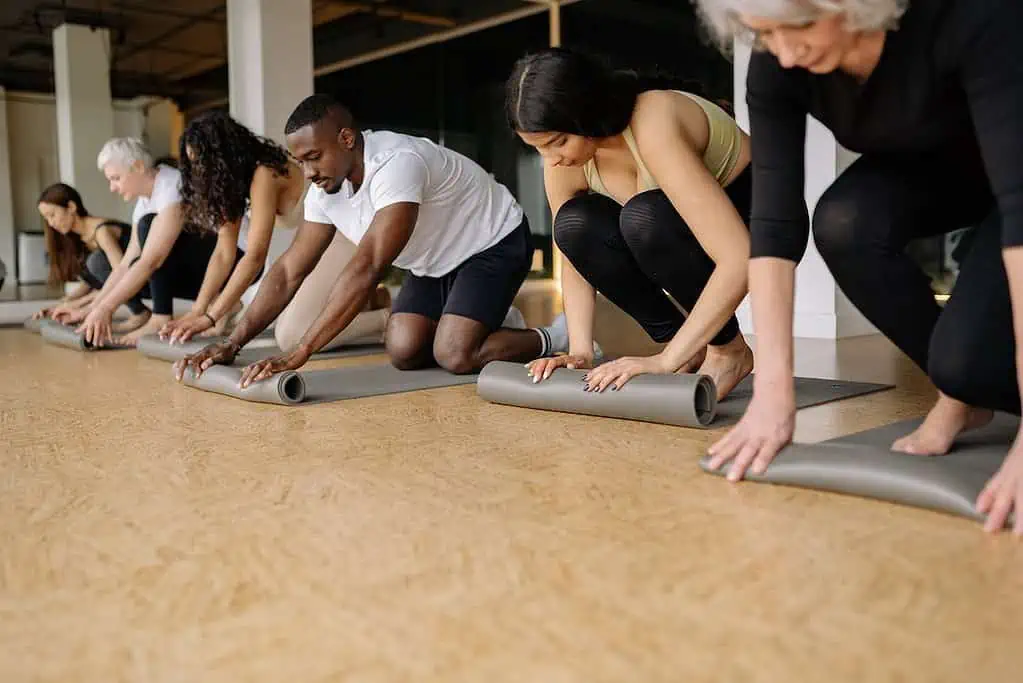
Choosing a yoga mat
For yoga, you are going to need a good quality yoga mat. And no, not all yoga mats are made equal. This will help your hands and feet to stay in alignment and for you to focus on the practice itself rather than sliding all over your mat!
We have already covered the quality of yoga mats in other articles, so I suggest you take a look at these for some inspiration:
- Alo Yoga Mats and reviews
- How thick should yoga mats be?
- How to keep your yoga mat grippy and sticky
- Best Non-Toxic and Eco-friendly Yoga Mats
- Best lululemon Yoga Mats
If you are still not sure, it can be good to go into some yoga stores or studios and ask to feel the texture of the mats so that you can find something that works for you! Different studios may have yoga mats for rent so you can try them before you buy!
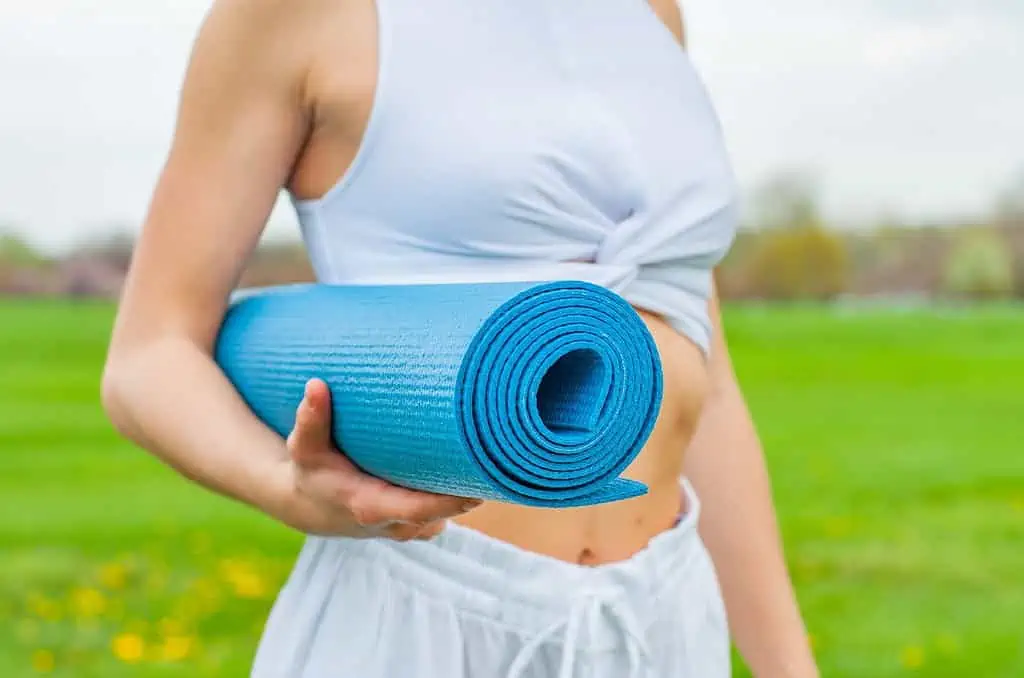
Learning the basic yoga postures
You’ve got your mat, you’ve put on your most comfortable yoga outfit, and you know the basic history of yoga. Now it is time to move the body through a yoga practice!
Roll out your yoga mat and make sure you have enough space around you to stretch your limbs.
Start with a few deep breaths, filling the lungs and expanding through the diaphragm as you breathe deeply. Close your eyes and sit for a few moments in stillness. This simple and quiet meditation can help you to tune into your body and mind. It will allow you to let go of stress and not feel overwhelmed. Instead, you can use this time to feel calm and centered.
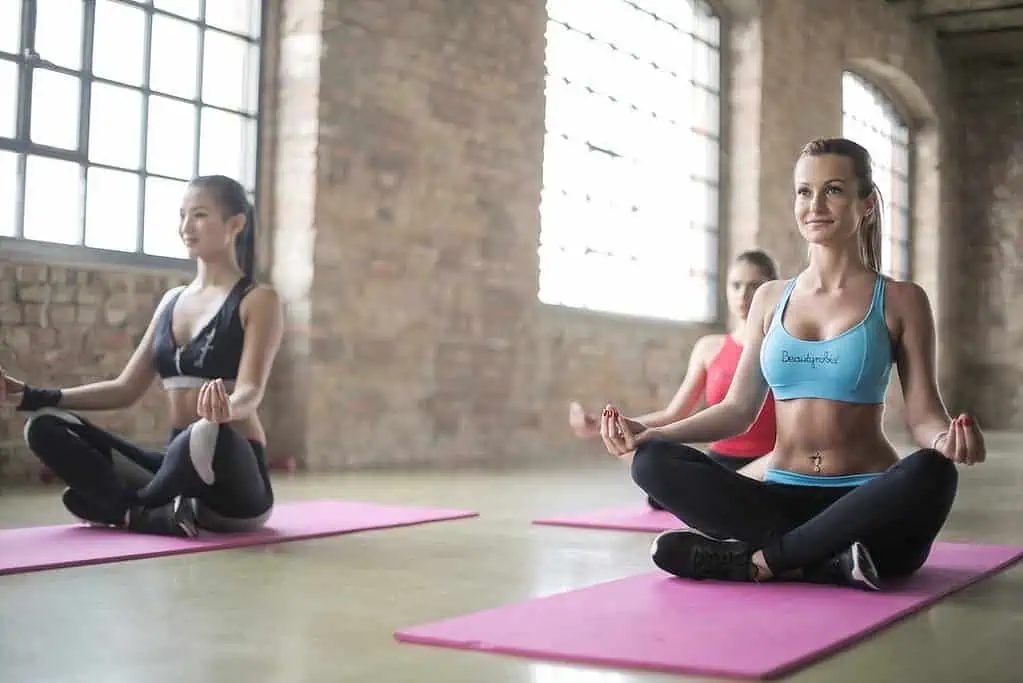
Child’s pose
Child’s pose is a wonderful place for starting yoga. Take your knees wide to the edges of your mat, bring your big toes together to touch, and sit back on your heels. Keep your butt connected to the feet as you walk your hands to the top of your mat. This will give you a nice stretch through the spine and the inner thighs. As you work on elongating the body, you are creating a peaceful pose to rest in. Focus on the flow of the breath moving down into the pit of the belly. Feel the rise and fall of the body as the breath moves through you.
With the forehead connected to the floor, it also activates the parasympathetic nervous system and can lead to reduced stress. Hold this post for a few minutes, staying for as long as is comfortable, to receive the maximum benefits.
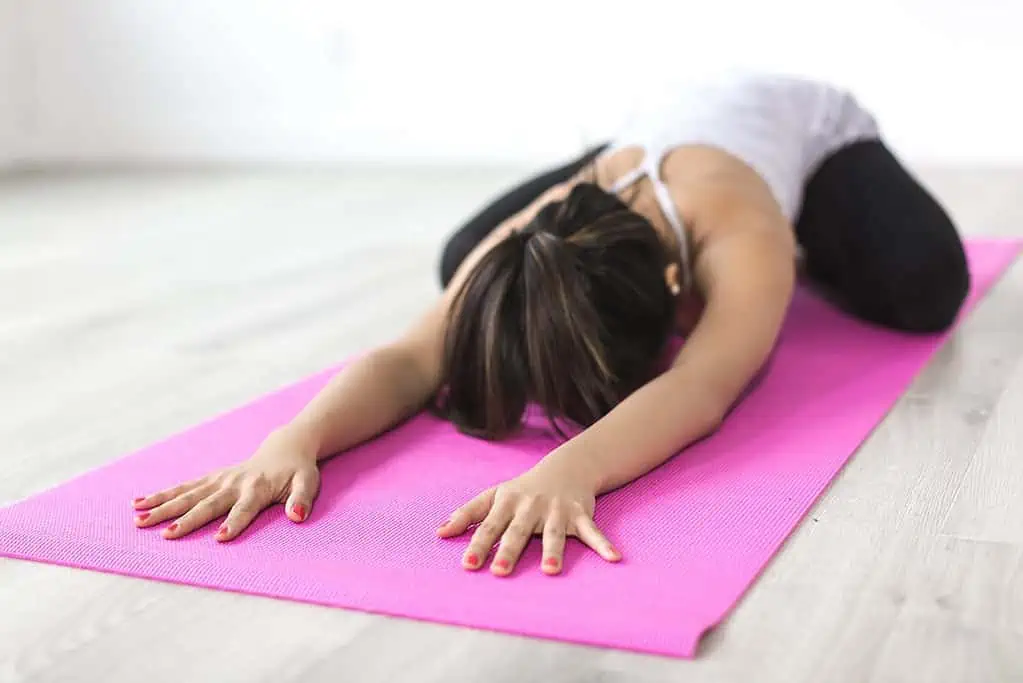
Cat-Cow
For cat-cow pose, come to all fours, with your hands beneath your shoulders and your knees hip-width apart. Spread your fingers wide and activate all of the tiny muscles in your hands.
As you inhale, drop the belly down, pull your chest through your arms, squeeze the shoulder blades together and look forward.
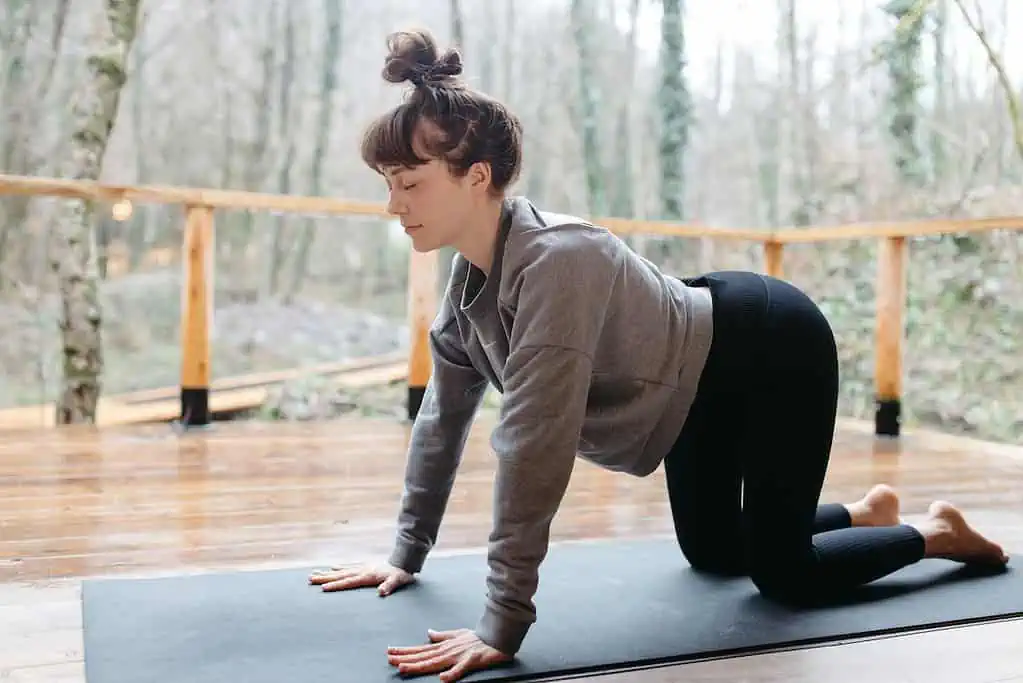
As you exhale, tuck your chin, round out the sine, and arch your back toward the ceiling. Continue the movement while you focus on flowing with your breath. Feel the stretch of the muscles around your shoulders and spine, opening and expanding in the body.
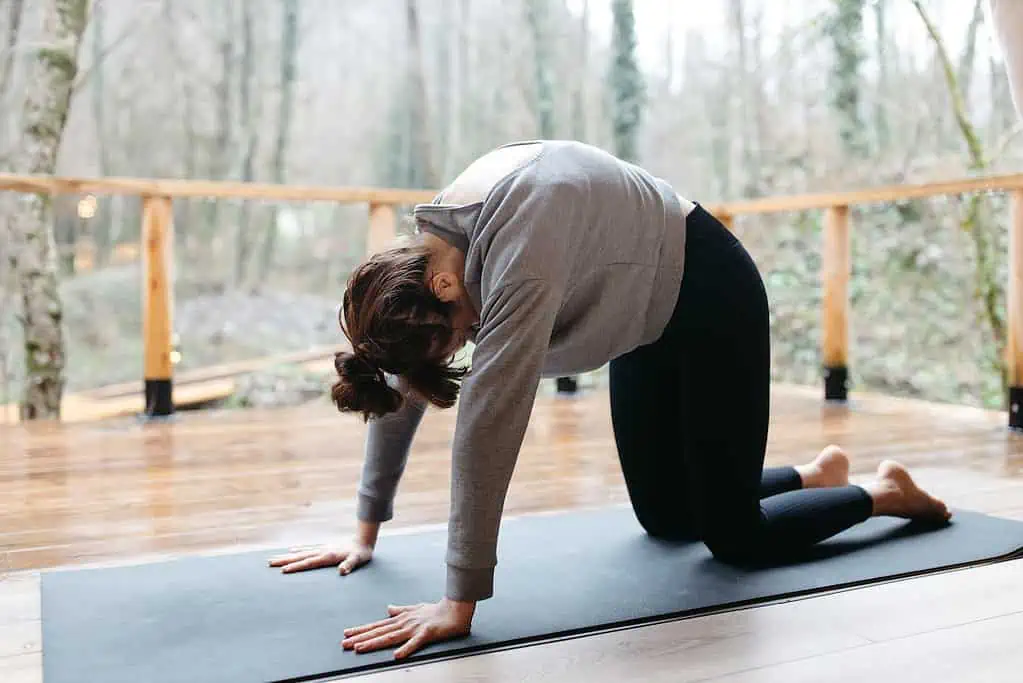
This cat-cow exercise is also known as Bidalasana, and it is a really wonderful way to focus on multiple body parts at once. If you want to get creative, you can move away from the spine’s traditional up-down movement and create circles and creative shapes with the spine to stretch a number of other muscles too.
Downward facing dog
Known as adho mukha svanasana, downward-facing dog is great to incorporate into daily practice. Although it does not seem like a challenging pose, when you practice regularly you will see how this pose builds strength in the body and spine. Doing it properly will create a big difference in the muscles that are used, helping to tone your body and build inner resilience. Here are some tips for you to get the perfect downward-facing dog pose:
- Activate your hands and press into all ten fingertips. This will help to lengthen the spine.
- Keep your feet hip-width apart for stability and balance.
- Tilt the tail-bone up toward the sky.
- Look between your knees or inner thighs.
- If you want to deepen the pose, you can take one leg up to the sky behind you. Drive through that heel and extend through the spine. You might even like to find a bent leg variation here to stretch through the hip flexors.
- The most important thing in yoga is to remember to breathe. Keep inviting the breath into your belly.
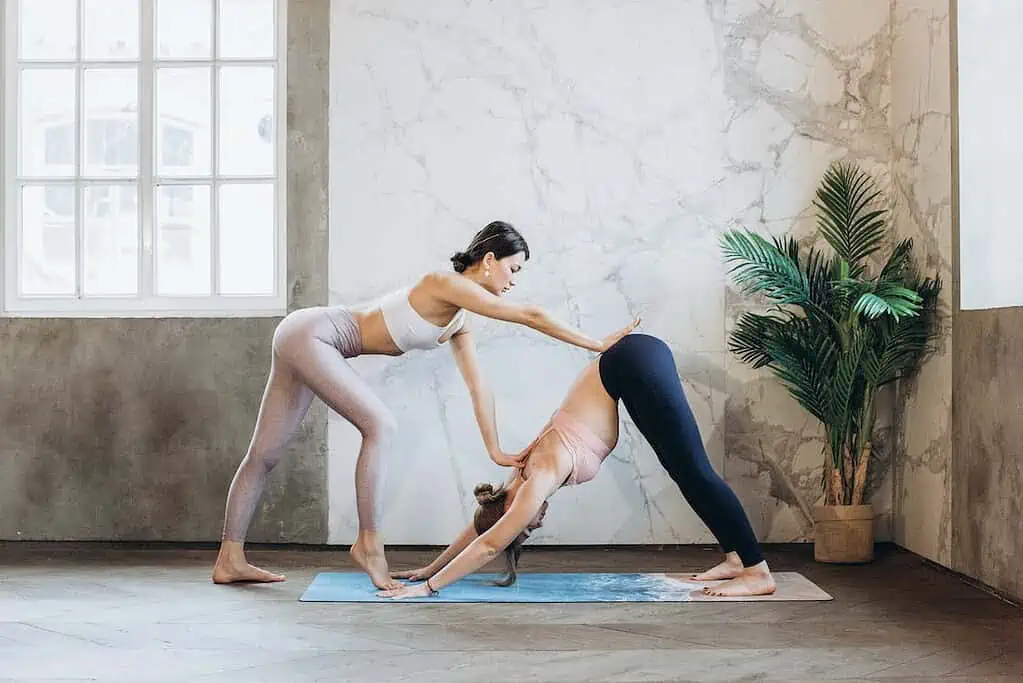
Mountain pose
One of the most common standing poses in yoga is Tadasana, or Mountain pose. This pose is incorporated into almost every yoga practice as it is a foundational asana. To do this pose, stand with both feet hip-width apart on the floor beneath you. For this pose, focus on growing the crown of your head toward the sky and rooting your feet down into the earth.
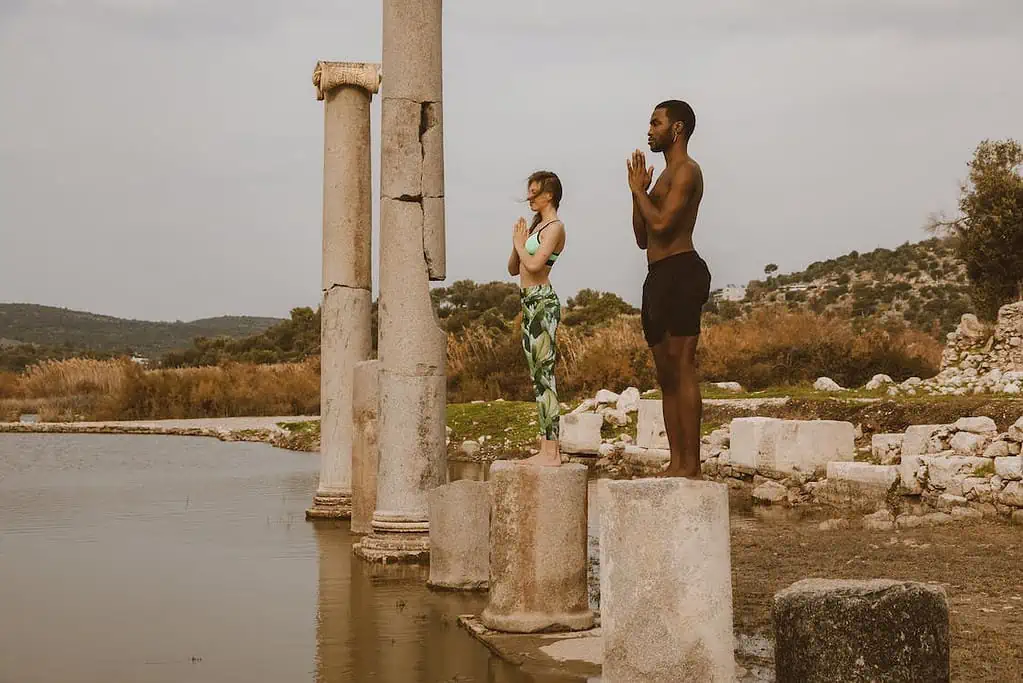
To test your balance from here, choose one standing leg, and allow the other foot to float up off the floor. This balance exercise can build strength in the legs and support the growth of balance in all areas of your life.
Savasana
Corpse pose, or Savasana, is one of the best poses for rest and relaxation. It is both a yoga pose and a meditation all in one. Lay flat on your back, close your eyes, and let the stress melt out of your body. This posture is done at the end of every class as it incorporated all of the benefits of meditation, as well as allowing time for the body to integrate the practice that it just moved through.
Focus on your breath, imagine that you are breathing in peace, and breathing out stress, or whatever else it is that you need to let go of. Yoga practice is never complete without Savasana pose at the end.
Putting it all together
If you are ready to try more of a gentle flow yoga practice, then you can try a beginner yoga routine sequence for ideas and inspiration to add to your home practice!
You may also like to check out online yoga videos that are available on Youtube such as Yoga with Adriene, for a great intro for beginners!
Creating a daily practice
Regular yoga practice is the most effective way to build upon your yoga and absorb the bountiful benefits. If you are starting yoga, this may look like a weekly practice and learning to incorporate some more time for yoga in your daily life. But if you are wanting to become experienced in yogic practices, having a daily practice will be of most benefit to you.
You can train the body to build strength through yoga, but you may also feel the calling to lift weights or incorporate resistance training too, to find strength faster.
A great idea is to create a yoga to-do list that outlines what your daily yoga session will look like, what key yoga postures you want to incorporate, and whether you are focusing on upper-body or lower-body flexibility – or both!
Listen to your intuitive call, and the feelings of your body, for it will guide you to move in a way that feels good for you. Whatever way you start practicing yoga will be the perfect beginning of your own personal yoga story.
Expanding your practice with a registered yoga instructor
If you are ready to go to the next level with your yoga practice, it can be worth going to a yoga studio or talking to a yoga instructor. If you tell them about your foundational yoga at-home practice, they will be able to help guide you toward the next steps on your yoga journey.
Yoga instructors are trained in the poses, the muscles, and yoga philosophy, making them a great source of information for a new yogi! You might even find after some time that you feel the calling to do yoga teacher training to deepen your own understanding of this ancient practice.
Frequently Asked Questions:
How can I teach myself yoga?
Start small, with achievable goals, such as doing a 10-minute practice, three times a week with an instructor on Youtube. This will help to set you up with foundational poses and knowledge. Then, when you have your own repertoire of poses, you can start to create your own creative sequences!
When is the best time of day to practice yoga?
Yoga can be done at any time of day. If you practice in the morning, you might want an energizing and uplifting practice. For midday, or work breaks, you might want to try a stress buster and for the evening, it is best to turn toward restorative and relaxing yoga.
But depending on your personal schedule, yoga squeezed into any part of the day will be highly beneficial for you!
How much yoga is enough yoga?
Is there such a thing as too much yoga? We don’t think so! Ideally, a little yoga every day, whether that is 5 minutes or 60 minutes, will lead to great progress and a calm body and mind.
But ultimately, your body will call the shots on what feels right for you. Remember, if you feel exhausted, or strained, choose a more restorative practice for a while to support your body and nervous system. You will know when your body is ready to move back into vinyasa or a stronger practice. Trust that intuitive feeling.

